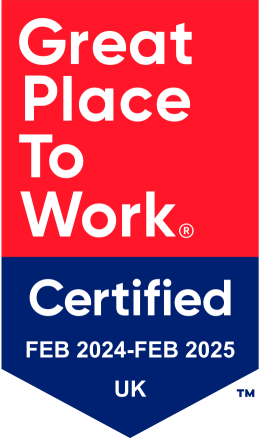21 April 2020 | Blog
The new normal: What do travel companies need to start preparing for?
21 April 2020 | Blog
The new normal: What do travel companies need to start preparing for?
It’s a time for survival, but it’s also a time for reflection where all companies can ask themselves what they could be doing differently so that they’re ready for next time. And “next time” could mean anything from a short delay on a single aircraft to a new strain of the COVID-19 virus.
Four months into the global crisis, I’ve had a look at what ‘the new normal’ is likely to look like, with consumer expectations defining what we all do next.
And with that in mind, here are three areas of focus I believe will help travel brands prepare for life post-COVID-19.
On-ground and in-flight processes
Airlines like Emirates and Etihad have already implemented technology that tests passengers for potential illness – including COVID-19 - prior to boarding. Knowing that this sort of technology exists will do wonders for customer confidence and will get people travelling much quicker. If new strains are likely to occur, this sort of technology is something all airlines or airports should consider introducing as standard. After all, travel is not going to be the positive and exciting experience many passengers look forward to if they’re anxious about the health of the person they’re sitting next to.
In the meantime, social distancing protocols enhanced cleaning procedures, and changes to food packaging and delivery are all good places to start. But the key is not just to do it, it’s to keep everyone informed about what you’re doing to make flying safer and more enjoyable.
New experiences
In our recent eGuide called The cost of silence: Why travel companies can’t afford to stop communicating during the COVID-19 crisis, we talked about the rise of the experience. During the lockdown, your passengers have had less of an opportunity to spend their money on ‘things’. As a result, they are likely to be dreaming of what they’ll do, rather than what they’ll buy, once they’re free to move around again.
This poses a fantastic opportunity for travel companies to promote the experiences they can offer passengers by showing them the value they can provide, as opposed to just a low price. This includes offers of bundles, once-in-a-lifetime tours, promotions for unique cultural experiences, and VIP opportunities. Hyper-personalised ancillary offers will allow you to generate additional revenue outside of the normal ticket price. Take a look at how Edelweiss – a member of the Lufthansa Group – increased CarTrawler bookings by more than 100% in the month following the implementation of personalised pre-departure communications.
A recent report by Boston Consulting Group (BCG) suggested that short-haul travel would be the first to see an uplift. So travel companies should be planning their aspirational communications, focusing on how travellers can get the most memorable experience out of their first quick break post-crisis.
Communications
Consumer expectations have affected every industry possibly more than anything else over the last decade. And a key element of this is communication. People expect to be able to find information quickly and easily, and legacy systems and a continually changing landscape mean this is an area in which the travel industry has been slow to catch up. Simple self-serve options and proactive communications in the likes of retail, leisure, and entertainment mean that consumers are no longer willing to put up with sub-standard solutions in other industries. And why should they?
The current crisis – and working with depleted teams and budgets in particular – poses a huge opportunity for travel companies to look at their most inefficient processes and generate new strategies for the post-COVID-19 world. This means finding new ways to keep in touch with passengers, to offer them information before they go looking for it, and to remove unnecessary stress for both the passenger and the airline. Because you’ll be amazed at the positive impact this will have on your contact centres.
A solely manual response to planned and unplanned disruption is both inefficient and expensive.
Running even a medium-sized call centre is prohibitive to many travel companies due to staff and real estate costs. During planned disruption, such as a schedule change, an airline with ten million passengers per year could face costs upwards of $730,000*.
Once additional ad-hoc communications are then taken into consideration, an airline could be looking at total costs of more than $1.5 million every year to run a call centre* – costs that could be almost eliminated with automation.
If you’ve found that your passengers have been unhappy with the way you’ve been communicating with them amidst the coronavirus crisis, let us know and we can show you how you can surpass their high expectations. And the best part is we can get you up and running with the 15below platform in as little as three days.
The author
 Alex Thornton is Head of Account Management APAC for 15below and has been supporting the customer community across the APAC region since 2012. Having worked in the travel industry for more than 25 years, Alex shares his extensive understanding of passenger experience in an ever-changing landscape with best-in-class brands like Qantas, Cathay Pacific and China Airlines.
Alex Thornton is Head of Account Management APAC for 15below and has been supporting the customer community across the APAC region since 2012. Having worked in the travel industry for more than 25 years, Alex shares his extensive understanding of passenger experience in an ever-changing landscape with best-in-class brands like Qantas, Cathay Pacific and China Airlines.

